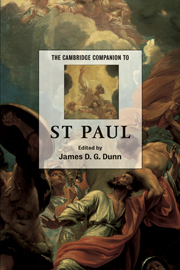Book contents
- Frontmatter
- Introduction
- Part I Paul’s life and work
- Part II Paul’s letters
- 3 1 and 2 Thessalonians
- 4 Galatians
- 5 1 and 2 Corinthians
- 6 Romans
- 7 Philippians
- 8 Colossians and Philemon
- 9 Ephesians
- 10 The Pastoral Epistles
- Part III Paul’s theology
- Part IV St Paul
- Select bibliography
- Index of References
- General Index
8 - Colossians and Philemon
from Part II - Paul’s letters
Published online by Cambridge University Press: 28 May 2006
- Frontmatter
- Introduction
- Part I Paul’s life and work
- Part II Paul’s letters
- 3 1 and 2 Thessalonians
- 4 Galatians
- 5 1 and 2 Corinthians
- 6 Romans
- 7 Philippians
- 8 Colossians and Philemon
- 9 Ephesians
- 10 The Pastoral Epistles
- Part III Paul’s theology
- Part IV St Paul
- Select bibliography
- Index of References
- General Index
Summary
COLOSSIANS: GENERAL SITUATION
Author and readers
Colossians purports to be written as a letter by the apostle Paul, along with Timothy (1:1), through the services of a scribe (4:18). This letter is addressed to the Christians in Colossae, a city in Phrygia located inland from Ephesus on the south side of the river Lycus in western Asia Minor. Paul himself did not found the Colossian church (2:1); the letter suggests that his link to the Christians there may have developed through Epaphras, who had worked among them (1:7-8) and from whom he sends them greetings (4:12). According to the text, Paul composed the letter while in prison (4:3, 18; see 4:10; 1:24).
Date
If the letter was composed or endorsed by Paul, then it was written during one of Paul’s imprisonments, that is, either in Ephesus (during the mid 50s CE) or in Rome (which would imply a date around 60 CE, just prior to the earthquake which struck the Lycus region in 60–1 CE).
- Type
- Chapter
- Information
- The Cambridge Companion to St Paul , pp. 116 - 132Publisher: Cambridge University PressPrint publication year: 2003

